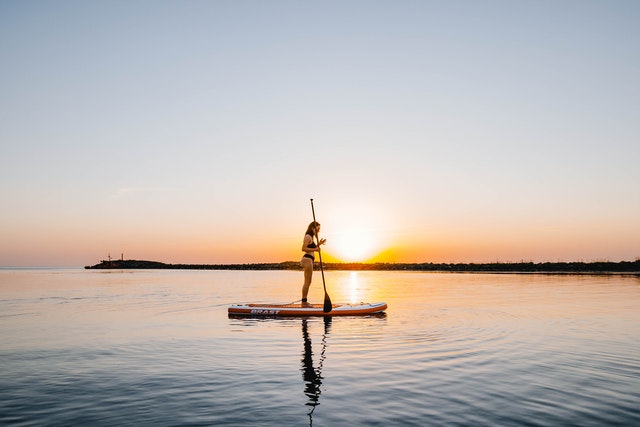SUP is a great way to have fun on the water while still getting a full-body workout. Because you stand at full height on your board, you will also have a unique vantage position for seeing what’s going on beneath the water and out on the horizon without being constrained to a kayak or canoe’s hull.
Stand-up paddleboarding in the UK is a fun way to get outside and soak up the sun and water. It’s also a fantastic type of exercise, particularly for the core. Paddleboarding for beginners might be intimidating because it’s difficult to know where to begin, so read on to learn the basics.
What Is Stand-Up Paddleboarding?
Stand-up paddleboarding is a water sport that interlinks and enjoys the water without having to swim in it. Paddleboards, unlike canoes and kayaks, are entirely flat boards on which you can stand, kneel, or sit to paddle.
How To Paddleboard
It’s critical to learn how to paddleboard properly if you want to get the most speed and performance out of each stroke while also improving your balance. This will speed up your paddling and offer you a better workout. You will also have greater control of the board and be able to navigate more efficiently if you acquire the appropriate technique.
Here are some paddleboarding basics for beginners:
How To Stand On A Paddle Board
- In shallow water, stand adjacent to the board. Keep an eye on the fin to make sure it doesn’t drag on the bottom.
- Place your paddle in the middle of the board.
- If there is an ankle leash, attach it.
- Kneel on the board right behind the midway point and plant your hands firmly on the paddle.
- As soon as you feel balanced, slowly stand up.
- Stand in the middle of the board, which should lie flat on the water with neither the nose nor the tail lifting up or pushing into the water.
- Your feet should be around hip distance apart or wider, and your knees should be slightly bent.
How To Hold A Paddleboard Paddle?
With one hand, grip its T bar at the top of the paddle, and with the other, approximately halfway down the paddle, place your other hand at a good distance. The angle of the paddle blade must pull away from you, the opposite of how a kayak paddle should be held.
How To Paddle A Stand-Up Paddle?
- To aid in balance, keep your core engaged.
- As you stretch the paddle forward for every stroke, keep your arms straight.
- Switch sides and reverse your hand positions after 4-5 short, close strokes on every side of the board. Continue paddling on one side to turn.
The sky’s the limit when it comes to how much fun you can have once you’ve chosen a board, learned the basics, and gotten out on the water. The most challenging aspect of learning to paddleboard is simply going out there, so all you have to do now is take the first step!

